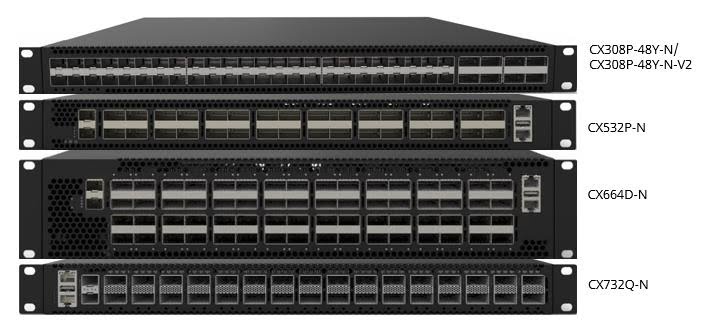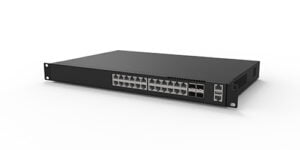Table of Contents
Asterfusion has successfully identified a high demand for EVPN Muti-homing in network overlay solutions in communication with our customers. Despite a delay in open-source solutions and sluggish virtualization development within the SONiC community, Asterfusion’s SONiC Enterprise distribution, AsterNOS 3.1-R0314P06.2, has come to the rescue. EVPN Muti-homing is now supported, enabling its using on Asterfusion CX-N data center switches. Let’s delve deeper into the importance of this function in data centers.
What is EVPN Multi-homing?
EVPN Multi-homing is a cutting-edge technology that employs multiple physical links and IP addresses to achieve redundancy and distribute network traffic in a data center network built using Ethernet VPN (EVPN) technology. With EVPN Multi-homing, users can connect to the data center network using multiple physical links from different switches. If a link or device fails, the network can automatically switch to a backup to ensure seamless connectivity. To improve network performance, load balancing can be utilized to distribute traffic to multiple links or addresses. As a result, EVPN Multi-homing offers diversified, redundant security policies to bolster network security.
Why EVPN Multi-Homing?
To enhance reliability in the context of VXLAN network overlay, a common approach is to establish dual homing connections with servers that have dual NICs. This ensures that services remain uninterrupted if one NIC fails. However, network administrators want to efficiently use NIC and link bandwidth resources. Thus, a dual-active implementation allows both NICs to forward traffic simultaneously. To achieve this, a current active-active solution utilizes MC-LAG to virtualize two access devices that are dual-homed to servers into one device. Moreover, two dual-homing devices utilize the same VTEP. From a remote device’s perspective, it is tantamount to linking to the VXLAN network through a virtualized device.
Click for what is MC-LAG
The solution of adopting the MC-LAG dual-active access reliability, however, has some shortcomings. Firstly, MC-LAG access to VXLAN is not a standard-defined EVPN Multi-homing solution, and may result in incompatibility among devices from different manufacturers due to differences in implementation. Secondly, MC-LAG is not expandable to Multi-homing and multi-active, affecting its scalability and reliability.

Unlike the MC-LAG solution,EVPN Multi-homing is a VXLAN gateway Multi-homing and multi-active solution that follows the RFC standard. It forms a redundant backup group composed of multiple VTEPs, which solves the network interruption caused by VTEP single point failure. Additionally, it allows for traffic load sharing among multiple VTEPs, resolving the issues that MC-LAG faces and effectively improving the VXLAN access side’s reliability.
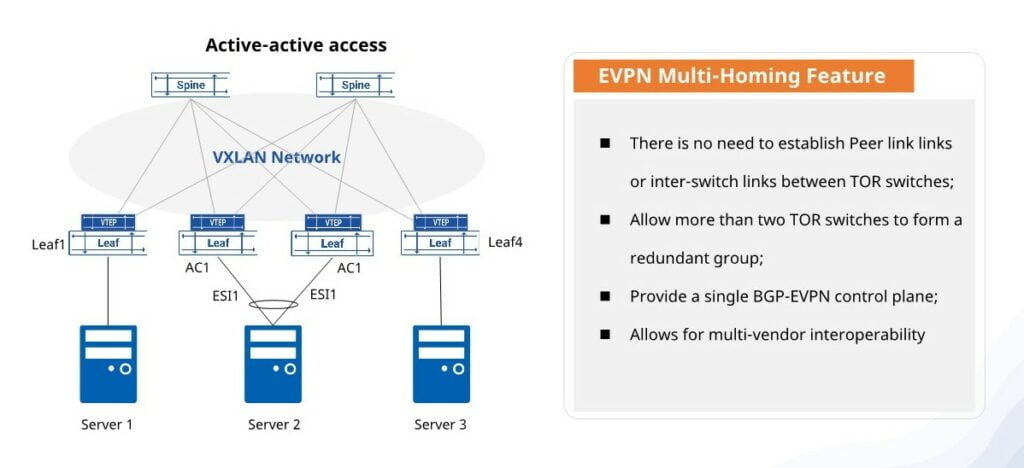
The best part is that there is no need to establish peer links or inter-switch links between TOR switches. It even enables more than two TOR switches to become a redundant group and provides a single BGP-EVPN control plane. What’s more, it allows multi-vendor interoperability.
Contrast of EVPN Multi-Homing & MC-LAG
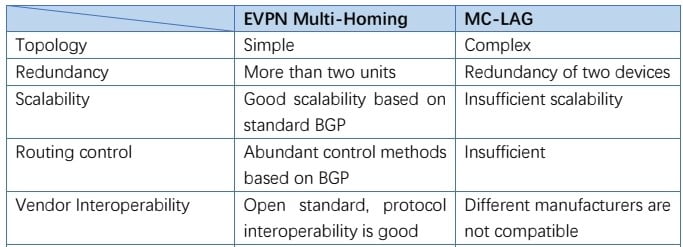
Asterfusion Enterprise SONiC NOS Support EVPN Mutihoming
The Asterfusion EVPN Multi-homing solution boasts an elastic and easy-to-expand Spine-Leaf architecture. Thanks to BGP EVPN, VXLAN, and other cutting-edge technologies, the virtual network and distributed network function gateway of the cloud’s tenants are now offloaded from the computing space and directly carried on the Asterfusion CX-N series data center switch, effectively boosting the power of server computing. This makes creating more virtual nodes for business incredibly easy, and in turn, improves the efficiency of server CPU computing power.
EVPN Multi-homing leverages EVPN messages to communicate with the host and uses the host connection information to dynamically establish a Layer 2 adjacency relationship with the server, providing notable redundant support for active-active servers. Moreover, redundant devices need no interconnection wires, resulting in saved ports and cables and a simplified network structure. Additionally, the open standard protocol BGP is deployed at the bottom layer of EVPN, ensuring redundancy is achieved, allowing any providers implementing EVPN Multi-homing according to RFC specification to become a part of the Ethernet segment, improving interoperability, and flexibility of the network.
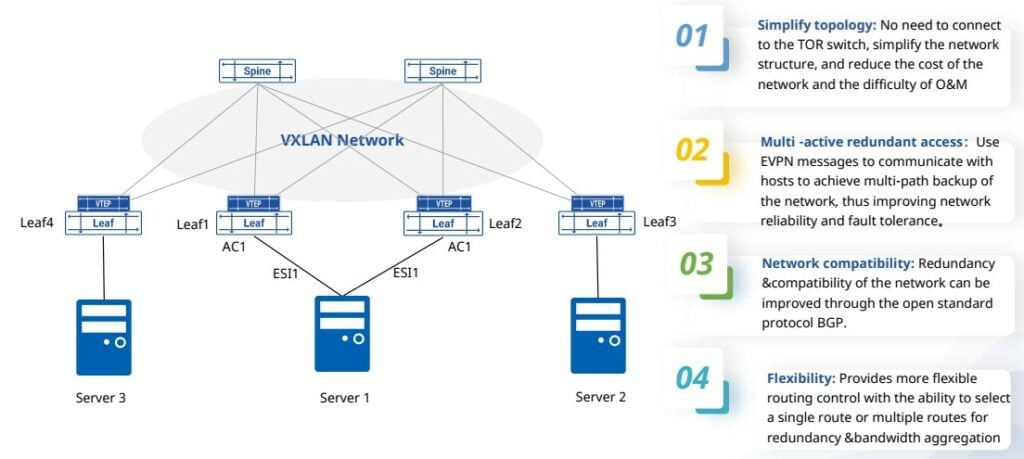
Advantages of EVPN Multi-Homing
EVPN Multi-homing technology is a powerful tool that can improve network reliability, optimize network load balancing, and simplify network design and management. Additionally, it supports business high availability and availability SLA, and virtualization and cloud computing in network architecture design, making it a valuable addition to data center network.
- Improve the reliability and fault tolerance of the network.
With EVPN Multi-homing, a network can be backed up in multiple paths, increasing its reliability and fault tolerance. In the event of a network failure or a link failure, the EVPN Multi-homing technology can quickly switch to the backup path in order to ensure the network continues to operate normally.
- Optimize the load balancing of the network.
The EVPN Multi-homing technology can achieve traffic load balancing,distribute traffic evenly to multiple paths, prevent single path overloads, and improve network performance.
- It simplifies the design and management of networks.
With EVPN Multi-homing technology, network architecture and management are simplified. It eliminates redundant ports and links between redundant devices, reducing network cost and complexity.
- Support business high availability and availability SLAs
Multi-homing EVPN technology can ensure higher service availability and availability SLAs, thereby ensuring smooth service operation.
- Provide support for virtualization & cloud computing.
The EVPN Multi-homing technology supports network architectures in virtualization and cloud computing environments, provides multi-path backups and load balancing of virtual machines, and ensures high availability and performance.
To read more about Asterfusion EVPN mutihoming white paper , please contact bd@cloudswit.ch
Related Products
